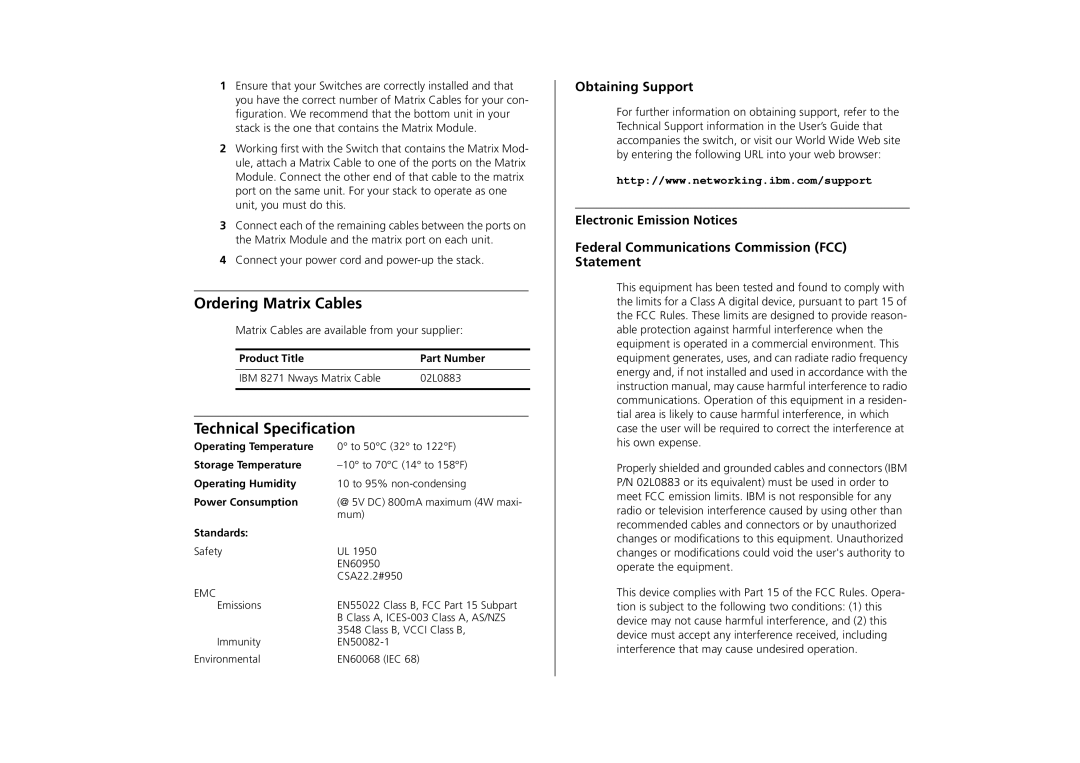8271 specifications
The IBM 8271, an influential model introduced in the early 1990s, represents a significant advancement in the realm of business computing and technology. Its development was part of IBM’s broader push to enhance enterprise solutions by providing robust hardware and software ecosystems tailored to the needs of various industries.One of the main features of the IBM 8271 is its powerful processing capabilities. It was equipped with advanced microprocessors that enabled it to handle complex computations and large datasets efficiently. This made it particularly valuable for businesses that required reliable performance for applications such as data analysis, financial modeling, and resource management.
In terms of memory, the IBM 8271 offered considerable capacity compared to its contemporaries. The architecture allowed for both RAM and storage expansions, which ensured that organizations could scale their systems as their data processing needs grew. This modular approach to memory and storage was crucial in accommodating the rapidly changing technology landscape of the time.
The 8271 also showcased IBM's commitment to connectivity. With various communication interfaces built into its architecture, users could seamlessly connect to networks, printers, and other peripherals. This feature was especially important as businesses began to embrace networking and shared computing resources, facilitating collaboration and efficiency across teams.
In addition to its hardware capabilities, the IBM 8271 established a strong foundation for software compatibility. It supported key operating systems and enterprise applications, allowing for flexible deployment options for users. Businesses could run critical applications needed for daily operations while also incorporating customized software solutions that suited their specific requirements.
Another characteristic that set the IBM 8271 apart was its emphasis on reliability and serviceability. IBM designed the system with redundancy and fail-safe measures in mind, reducing downtime and ensuring that businesses could maintain continuous operations, even in challenging circumstances.
Overall, the IBM 8271 was a formidable presence in the computing world, combining processing power, expandability, and connectivity with IBM’s renowned reliability. Its contributions to the industry were substantial, paving the way for advancements in enterprise computing that continue to resonate in modern technology solutions. With the 8271, IBM not only addressed the immediate computing needs of businesses but also set a precedent for future innovations in the evolving landscape of information technology.

